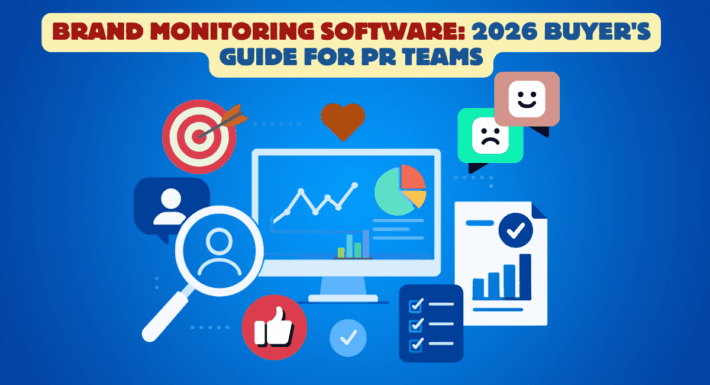How to Audit Your Digital Marketing Channels, Part 1

This is the first of a two-part series on the nuances (and importance) of conducting regular social media and digital marketing audits. This week’s post discusses how to audit the lion’s share of your digital program. Part two will focus on auditing social media specifically.
The importance of auditing your digital marketing channels – including your website, content, social media, and other elements – cannot be understated.
But what exactly can a digital marketing team do to keep on top of their brand’s digital footprint – and how often should they do it? Read on for a step-by-step guide.
The Importance of Regular Digital Marketing Audits
So, just how important is it to do regular digital marketing audits?
Extremely, says Ankit Verma, Head of Content & Community at MASV, a large file transfer service that mostly works with the media and entertainment industry. Verma, who spearheads many of the company’s website and content marketing initiatives, says regular auditing helps companies:
- Understand where their preferred customers live on the internet (in terms of which websites, platforms, communities, or publications)
- What content do these potential customers respond to the best
- How they prefer to be engaged (in terms of type of content, style, and voice)
The company generally performs monthly audits supplemented by quarterly deep dives to keep things running smoothly, with ongoing analysis of content marketing and SEO performance performed almost constantly.
Verma says such audits are vital to ensure the company produces content that helps reach its business goals. “One of the dangers of not auditing regularly is you could be wasting your resource time,” he explains. “You could have a wicked content team and produce really good content, but if you’re not tracking or understanding if that content is having an effect, you could just be draining those resources.”
Regular auditing also helps marketing teams make data-driven decisions around the type of content the company should focus on, Verma says, along with helping to stay on top of any potential SEO landmines.
“On the content side, audits are required regularly, especially with SEO,” he says, mainly because the digital playing field often changes suddenly and without warning. “For example,” he says, “we have certain pieces of content that rank high, but then suddenly the rankings drop, and then we see our website traffic drop.
“That’s a big reason why it’s so important to regularly keep track of your standing with the keywords that you’ve identified. When you see any drops, you can then do the research of figuring out why it happened and what you can do to remedy the situation.”
MASV’s Content Distribution Manager, Anna Mroczkowski, agrees. She says the company uses many digital tools – including Google Analytics, HubSpot, Semrush (for SEO), and several Google Chrome plugins – to help facilitate its ongoing audits.
She also says any analysis must keep the proper context in mind. For example, a drop in website visits or social media clicks during the height of the August vacation season probably isn’t anything to worry too much about. “In that case, it’s about making a note to say ‘OK, it’s fine for the next couple of months, but let’s make sure we continue to build momentum in September as people get back to their regular schedules.”
How to Conduct a Digital Marketing Audit
A well-run digital marketing audit looks at all elements of an organization’s program, from SEO, your website, and digital content to paid ads, email marketing, and social media (the latter of which we’ll explore more in the next post).
Here’s a brief rundown on how to attack each main element of your digital marketing program.
Website
The sheer importance of your website as a host for much of your content and potential conversions means this is probably the most important step. Auditing your website should closely assess website design elements, including look and feel, clean structure and navigation, clear calls-to-action (CTAs), and accessibility. But you should also examine important things such as mobile friendliness and speed.
Ensuring website speed is up to snuff, for example, is crucial. Research has found that the highest conversion rates occur with a load time of up to two seconds per page, with rates dropping around two percent for each extra second of load time. Companies can speed up their site in several ways, such as by compressing images and other files and removing unused Javascript.
Verma says MASV uses heat mapping software to track where users move their mouse on a web page, allowing the company’s marketing team to design web content that aligns with user preferences.
Search Engine Optimization (SEO)
SEO helps drive organic traffic by ranking your site higher in relevant search results when performed well.
But because Google – the godfather of online search – constantly changes its search algorithm, SEO simply can’t be a set-and-forget activity. SEO audits should be performed multiple times per year. And if your organization can afford to hire a dedicated SEO person, that person will likely have their finger on the pulse of your SEO effectiveness every day.
You can group SEO audits into three types: On-page, off-page, and technical.
- On-page SEO determines your web page ranks through factors such as meta titles and descriptions, keywords, headings, internal links, authoritativeness, and content quality
- Off-page refers to SEO not on your site (such as acquiring backlinks from authoritative sources)
- Technical SEO activities optimize your site for web indexing by search engine crawlers and can include reviewing your site’s URL structure, review of your robots.txt file, and double-checking your XML sitemap
Verma says authoritativeness is an element companies can’t forget about, especially in light of Google’s constantly changing algorithms. “They’re really trying to focus more on authority and expertise,” he says. ‘They don’t just want a random person writing a blog about cloud workflows – they need to prove they’re in that zone, or they’ve spoken to an expert.
“That’s why we have author profiles on our website. And if we interview someone, we write specific tags at the top and link to their profile, so Google can see: ‘Oh, yes, they vetted this through a reputable source.’”
Content Marketing
Hand-in-hand with SEO is content marketing, and teams must also audit a company’s content frequently to ensure consistent performance. Organizations should typically look closely at their best-performing content to determine what made it perform well.
Metrics companies can use to determine content performance include visitors/hits, bounce rate and duration of visit, and conversions via CTAs.
Indeed, Verma says determining what makes high-performing content is often a matter of reviewing past content to see what worked – and what didn’t.
“A few of the legacy pieces we’ve had for a while and that perform the best, we’ll analyze what’s working to see if we can duplicate that,” he explains. “Sometimes it’s about structure, sometimes it’s because there’s a video in it that’s communicating to Google that this is an extra dense piece of content. Sometimes it’s the category style: If Google sees something categorized as a how-to, they’ll prioritize it because usually people are looking to take a specific action.
“It’s a constant game of keeping track. You can’t just rest on your laurels and think, ‘Oh, that’s published, it’s good to go and that’s it.’”
Various pieces of content aren’t always created equal, either. You can map pieces of content to the stages of the customer journey (such as awareness, consideration, and purchasing), and then determine how those pieces performed in relation to their individual goals during your audits.
For example, MASV often produces and posts educational videos around filmmaking and post-production on its YouTube channel that aren’t necessarily designed to convert prospects into paying customers. “And I’m OK with that,” Verma says, “because if someone’s on YouTube they’re probably just there for education. And if we attach our name to that, eventually we will take that mind space share.”
Email Marketing
While email may feel passe in some quarters, it’s still one of the most reliable digital marketing techniques around. It must also be audited – or at least assessed in some way – regularly.
Fortunately, mainstream email marketing software has plenty of built-in analytics that allow marketers to quickly assess open rates, delivery rates, click-through rates, and other important metrics.
MASV’s Mroczkowski says that the company doesn’t often perform formal email marketing audits, instead running postmortems after every biweekly campaign to determine effectiveness. “We assess everything – what performed? What could we do better?” she explains. “We also do those postmortems on any outreach to any of our partners.”
Keep Your Marketing and Communications Programs on the Rails With Regular Audits
Not every team may have the time to perform ongoing and regular digital marketing audits to the degree we’ve discussed here, and that’s OK – as long as you realize that you’ll need to audit your digital channels at least annually to be the most effective.
You can also work with a partner to assess where you’re at and how your communications program is performing. Fullintel often performs one-time and ongoing PR, communications, and digital channel audits (including media monitoring audits and social media audits) for large organizations across the world.
Contact us today to learn more about how we can help make your communications program more efficient and effective.





